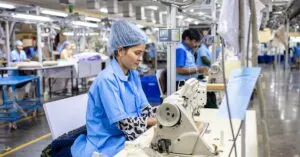Table of Contents
ToggleIn the world of 3D printing, filament is the lifeblood of creativity. But what if you could take that creativity to the next level? Enter the 3D printer filament extruder, the unsung hero of the printing process. This nifty device not only churns out filament like a pasta machine on a carb binge but also gives users the freedom to experiment with materials and colors.
Overview of 3D Printer Filament Extruders
3D printer filament extruders serve a crucial role in the additive manufacturing process. This equipment enables the conversion of raw materials into usable filament, providing significant flexibility in production. Mobility across various materials permits users to tailor filament based on specific project needs.
Different types of extruders, including single and dual screw extruders, each offer distinct advantages. Single screw extruders are simpler in design, making them ideal for basic materials. In contrast, dual screw extruders facilitate better mixing of materials, allowing for more complex and varied filament properties.
Temperature control is essential for effective extrusion. Filament must be heated adequately to ensure a smooth flow through the nozzle. Adjustments in temperature can alter the material’s viscosity, impacting the overall quality of the filament produced.
Filament diameter consistency is critical for successful 3D printing. Extruders typically set parameters to maintain a precise diameter, which ranges from 1.75 mm to 3 mm for standard filament types. Inconsistent diameters can lead to issues such as clogging and poor print quality.
Quality control measures should be in place during the extrusion process. Regular checks on the physical properties of the filament, including tensile strength and flexibility, ensure end products meet desired specifications. Manufacturers prefer thorough testing protocols to verify density and moisture content.
Adopting a 3D printer filament extruder fosters innovation within the 3D printing community. Individual creators and businesses alike can leverage this technology to experiment with new materials and composites. As a result, the productivity of bespoke projects increases, enhancing creativity across various applications.
Types of 3D Printer Filament Extruders
3D printer filament extruders come in different types, each suited for specific applications. Understanding these types helps makers choose the right extruder for their needs.
Direct Drive Extruders
Direct drive extruders attach directly to the hot end of the 3D printer. This configuration allows for precise control over filament feeding. Users benefit from reduced lag between the gear and nozzle, which results in better retraction settings. Such efficiency ensures consistent extrusion, making it ideal for flexible materials. Moreover, these extruders often handle varying filament types effectively due to their compact design. Their straightforward mechanics also simplify maintenance, appealing to both beginners and experienced users.
Bowden Extruders
Bowden extruders use a separate motor mounted away from the hot end. This setup features a tube that guides the filament from the feeder to the nozzle. The design reduces the weight on the print head, allowing for faster printing speeds. While Bowden extruders excel at producing high-quality prints, they may struggle with flexible filaments due to increased distance in filament travel. Users appreciate their ability to maintain consistent filament diameter, enhancing overall print quality. Additionally, this type of extruder is often preferred for large-scale prints, where speed and precision matter most.
Key Features to Consider
Selecting a 3D printer filament extruder involves several essential features that impact performance and usability.
Build Quality
Build quality significantly influences the extruder’s durability and reliability. A well-constructed frame made from sturdy materials prevents vibrations that can compromise print quality. High-quality components, such as hardened steel gears and precision bushings, enhance longevity. Users should also inspect the extrusion mechanism for smooth operation, as this affects filament feeding consistency. Robust designs often lead to better performance during prolonged use. Manufacturers frequently provide information about construction materials, helping users make informed choices based on their needs.
Filament Compatibility
Filament compatibility dictates what materials the extruder can handle. A versatile extruder accommodates various filament types, such as PLA, ABS, PETG, and flexible materials. Different materials require specific extrusion parameters, affecting working conditions. Coupled with this, some extruders perform better with specialty filaments, allowing for innovative projects. Users should check specifications to understand the filament range supported by the extruder. Assessing filament compatibility helps prevent potential issues in production, ensuring desired results.
Temperature Control
Temperature control plays a vital role in filament extrusion quality. Effective systems maintain consistent temperatures needed for different filament types. An extruder equipped with accurate temperature sensors allows for precise adjustments, reducing the risk of jams and clogs. During the extrusion process, overheating or underheating can lead to inconsistent filament diameter. Users often find that extruders with better thermal management yield superior results. Consequently, understanding temperature requirements for selected materials enhances the overall printing experience.
Pros and Cons of Using Filament Extruders
Filament extruders come with various advantages and disadvantages that users should consider when incorporating them into their 3D printing workflow. Understanding these factors aids in making informed decisions.
Advantages
Filament extruders create cost-effective material solutions. Users can produce filament from inexpensive raw materials, decreasing overall printing costs. Customization becomes straightforward, allowing creators to experiment with colors and materials tailored to specific projects. Consistency in filament diameter enhances print quality, reducing the frequency of printing issues. Efficient production methods provide greater control over filament characteristics. Flexibility in materials, such as PLA or ABS, opens new creative avenues for users. Quality control measures in extrusion processes help ensure that the final product meets desired specifications, leading to better results in 3D printing.
Disadvantages
Filament extruders require meticulous calibration for optimal performance. Inconsistent extrusion can lead to defects in prints, causing frustration. Maintenance demands time and expertise, as mechanical issues may arise during use. Limited knowledge about different materials can restrict a user’s ability to achieve the best results. Operational complexity may deter inexperienced users from fully benefiting from the technology. Production speeds can vary, impacting project timelines. Lastly, initial setup costs for high-quality extruders may be significant, presenting a financial barrier for some users.
Popular 3D Printer Filament Extruders in the Market
Many options exist for 3D printer filament extruders, each with unique features tailored to various users. The E3D Titan is a well-regarded choice for its reliable performance and compatibility with a wide range of materials, including flexible and composite filaments. Users appreciate its lightweight design, which helps maintain print quality.
Another popular option, the Bondtech BMG, stands out due to its dual-drive gear system. The dual-drive feature enables better grip on the filament, reducing the likelihood of slips and jams during printing. This extruder excels in providing consistent filament feeding, enhancing overall print reliability.
The Prusa i3 MK3S includes an integrated extruder and often receives praise for its user-friendly setup. Combining filament detection and automatic bed leveling simplifies the printing process, making it an attractive choice for beginners. Users enjoy the seamless experience this model provides.
For heavy-duty applications, the Filastruder offers a more industrial approach. This system allows users to create filament from raw plastic pellets, catering to those with advanced needs. Its capability to produce high-quality filament in large quantities supports small-scale production.
Finally, the Creality Ender 3 comes equipped with a basic yet efficient extruder, making it an ideal starting point for newcomers to 3D printing. Upgradability remains a highlight of the Ender 3, allowing users to enhance their systems as they gain experience. Overall, each of these extruders contributes to the expanding landscape of 3D printing, catering to a variety of project requirements.
Conclusion
3D printer filament extruders are transforming the landscape of additive manufacturing. By enabling users to create custom filament from a variety of materials, these devices foster creativity and innovation. The choice between Direct Drive and Bowden extruders allows users to tailor their setups to specific printing needs, enhancing both flexibility and print quality.
While the advantages of cost savings and material customization are significant, potential challenges like calibration and maintenance should not be overlooked. Users who invest time in understanding these intricacies will likely find that filament extruders elevate their 3D printing experience. As the technology continues to evolve, the possibilities for experimentation and production will only expand, making filament extruders an essential tool for any serious 3D printing enthusiast.




